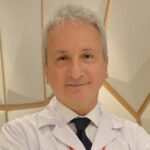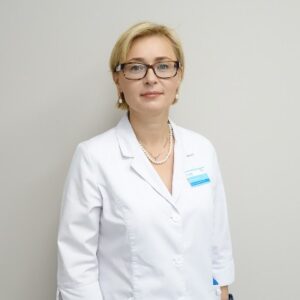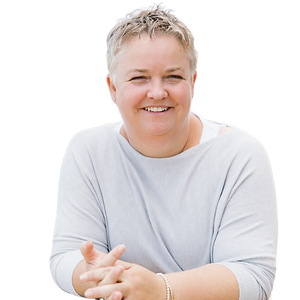Can you get OHSS after embryo transfer?
Is it possible to develop OHSS after embryo transfer?
Ovarian hyperstimulation syndrome (OHSS) may occur in women after hormonal stimulation during IVF treatment. The symptoms include swelling of the ovaries and fluid shift in the body. Can a patient develop OHSS after the embryo is transferred?

The straight answer is yes. What we can do is to avoid it from happening. How? If we are detecting mild or moderate ovarian hyperstimulation during the phase of the stimulation of the ovaries, by having serial scans, we would be obviously counting the follicles and also having estrogen levels. Then it goes hand in hand with your symptoms.
If we feel that you have an element of ovarian hyperstimulation, I would say: try to avoid the embryo transfer. Why? Because there is something called an early onset of ovarian hyperstimulation that is straightaway after the egg collection. However, even more severe is the late onset of ovarian hyperstimulation which happens when you have a successful pregnancy and the actual embryo that has implanted, has started to produce own beta- HCG. The beta- HCG is the drive for ovarian hyperstimulation. Obviously, if we have transferred one or sometimes two embryos, this can complicate things further.
If you have been recommended to postpone your embryo transfer because of a possibility of ovarian hyperstimulation, please listen to it now. We do not want to have a phase that can escalate from mild/moderate to severe and you would have to have a hospital admission for that.
If it was not as much evident by your symptoms, blood or the number of eggs produced and you still have this ovarian hyperstimulation, please contact the unit after the embryo transfer to have an earlier scan – in order to check the ovaries, to check if there is any ascites or fluid inside your tummy, to check your vital symptoms, how you pass urine, etc. This is the main stuff. This could be easily overcome by some tight stockings and hydrating yourself as much as you can. If this is something that is actually happening, you might be recommended to have low molecular weight heparin in small doses in order to prevent it. It is safe to take it but just to cover this period in order to prevent any complications.

After fresh embryo transfer, you can have an ovarian hyper-stimulation syndrome. We call it late ovarian hyper-stimulation syndrome because it is connected to the presence of ACG in the body. So if you have early ovarian hyper-stimulation and embryo transfer, and you are getting pregnant, your ACG will occur again. Then usually, it’s worse than the first. It’s the reason why we recommend not to do fresh embryo transfer if you have some suspicion of OHSS, and we recommend doing cryo embryo transfer. After cryo embryo transfer, you do not have ovarian hyper-stimulation.

For an experienced gynecologist, nowadays, there is no risk, 100%. Looking at the patient’s hormones, the patient’s response to hormonal stimulation, the numbers, we can see whether the patient is a candidate for hyperstimulation risk. In such a case, we can take some precautions. There are some trigger injections that we use for ovulation. Normally, we use some hormones for this, but in the face of the OHSS risk, we would change the trigger injection. With the trigger injection with egg donors, we can collect 90 or more than 100 eggs from one woman, and there is no hyperstimulation at all. This is the most important precaution that we can take. The other precaution is not to do the embryo transfer because if the woman gets pregnant, it will get worse.

Ovarian hyperstimulation syndrome (OHSS) is one of the potentially life-threatening complications in IVF. I have to say in the last few years, because of the protocols that we’re using, and the strategies that we have put in place the risk of OHSS is extremely low. In fact, the risk of having severe or critical OHSS is probably less than 1%. However, sometimes, these things can go wrong and the patient can be sick.
There are two types of OHSS, one is the early onset. The early OHSS is sometimes linked to the final injection, the trigger shot. And that usually develops within 72 hours from the trigger shot. If that develops, then really it is mandatory to freeze the embryos. So if a patient is already ill 1-2 days after egg collection, then really we must freeze the embryos, we shouldn’t really transfer them. Because if we transfer the embryos, then there is a high risk of developing a late onset of OHSS. Which is the one related to embryo implantation, and the production of the pregnancy hormone called beta SCG. Now the pregnancy hormones will then stimulate the ovaries again, and that is when it becomes a little bit of a catch then because you can’t stop the pregnancy, but is the pregnancy making your ovarian hyperstimulation worse? That is when severe or critical cases sometimes take place.
It is important if you are experiencing any symptoms or signs, or ovarian hyperstimulation at any point during the treatment cycle or after the embryo transfer, that you get in touch as soon as possible with your doctor, your clinic, or with the emergency services if the clinic is out of hours. Because the hyperstimulation is pretty serious, and really the risk should be kept to a minimum.
Related questions
What is the best IVF protocol for endometriosis?

+ 1 more answers









